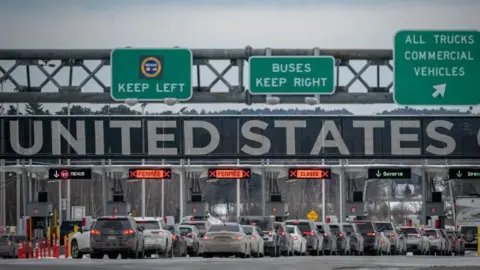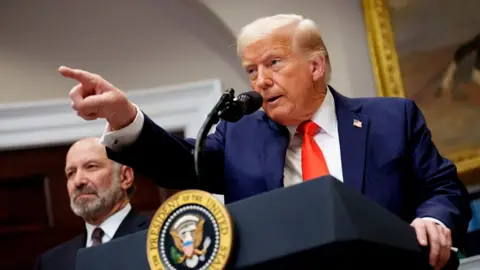
What do you think happens when the world’s largest economy makes a bold move in international trade? You might imagine ripples of change stirring across the globe, creating a mix of reactions ranging from excitement to apprehension among businesses and consumers alike. Recently, a new chapter in this saga unfolded as President Donald Trump announced a significant increase in tariffs on car imports. Let’s break this down, shall we?
The Announcement: What’s New?
In a moment that could reshape the automotive landscape, Trump declared a 25% tariff on imported cars and car parts, set to take effect on April 2. This announcement ignited discussions and raised eyebrows not just in the U.S., but globally.
Timing and Implementation
Trump’s timing for these tariffs is as notable as the tariffs themselves. The charges on businesses importing vehicles are immediate, but those on car parts might roll out a bit later, possibly in May. This staggered implementation could imply a planned strategy to manage the repercussions of such a bold economic decision.
The Motivation Behind the Move
The president argued that this move would lead to “tremendous growth” for the U.S. car industry, with promises of generating jobs and encouraging investments domestically. For many, this could sound like a rallying cry; however, let’s take a closer look at the underlying implications.
Understanding Tariffs: Why They Matter
So, what exactly are tariffs, and why do they hold such significance in the world of trade? It might help to think of a tariff as a tax that the government places on imported goods. In this case, it’s a charge on cars and parts that companies are bringing into the U.S.
The Protectionist Angle
By raising tariffs, Trump aims to protect American manufacturers and ensure they remain competitive. The intention is to encourage consumers to buy American-made cars instead of imports. But here’s the thing: while tariffs can provide temporary relief to domestic industries, they often lead to higher prices for consumers.
The Cost to Consumers
Analysts suggest that these tariffs could hike the price of vehicles significantly. Just to give you an idea, estimates imply that the cost of a car could swell anywhere from $4,000 to $10,000, depending on various factors. If you’re in the market for a new car, this might give you pause.

The Global Impact: Widespread Concerns
When the U.S. changes its trade policies, the repercussive effects stretch far beyond its borders. This shift may act like a domino that triggers reactions from various countries.
Straining Alliances
Many countries, including Canada and Mexico — the U.S.’s closest trading partners — face direct consequences. They supply a significant number of cars and parts to the U.S., and an increase in tariffs could lead to retaliatory measures. For instance, Canadian Prime Minister Mark Carney described the tariffs as a “direct attack” on his country’s car industry. That’s quite a strong statement, right?
A Bit of Historical Context
It’s crucial to mention that Trump’s approach to tariffs isn’t new. Historically, U.S. leaders have used tariffs as a tool to protect domestic industries, but they have also faced backlash both at home and abroad. The intricate web of global supply chains adds complexity to this situation. For example, many U.S. car manufacturers operate in Canada and Mexico.
The Economic Fallout: A Double-Edged Sword
While Trump’s supporters view these tariffs as a necessary strategy for revitalizing the U.S. automotive sector, the economic implications could be unfavorable.
Potential Production Shutdowns
Industry analysts have voiced concerns that this move may lead to temporary closures in production facilities across the U.S. Picture this: you’ve got a factory that’s reliant on parts from overseas. Now, with costs rising, continuing production may become more expensive or even untenable. It could force companies to reconsider their business strategies drastically.
Driving Up Prices
When businesses are faced with increased production costs, they inevitably pass those costs onto consumers. The automotive industry, in particular, could see a significant price hike for new vehicles. If you’re eyeing a new ride, your wallet might feel a little lighter than anticipated.

Responses from Automotive Giants
Major players within the automotive industry are already feeling the heat. With stocks taking a nosedive—General Motors shares dropped about 3% following Trump’s announcement—it’s clear that investors are anxious about the implications.
Corporate Reactions
Leaders from top car manufacturers like Ford and General Motors urged the president to reconsider any additional tariffs on the industry. However, it seems like the decision has been made, and the impacts are starting to unfold.
Encouraging Domestic Production
Interestingly, a day before the tariff announcement, South Korea’s Hyundai revealed plans to invest $21 billion in the U.S. It’s a curious juxtaposition—one that Trump hailed as proof that tariffs drive companies to invest more domestically.
The Negotiation Landscape: What Lies Ahead?
Negotiations surrounding trade have always been a complex affair, and these new tariffs may stir the pot even further.
Trade Relations in Jeopardy
Countries that rely on exporting cars to the U.S. are understandably concerned. This includes big-name car producers from Japan, South Korea, and Europe. The U.K., for instance, is actively seeking a trade deal to minimize the impact. A world where countries begin to impose tariffs as a tit-for-tat response could lead to increased costs for consumers everywhere.
The Risks of a Trade War
Many economists warn that these tariffs could stir up a larger trade war. Essentially, it’s a dangerous game where countries retaliate against tariffs, escalating to an all-out trade conflict. Given how closely intertwined global economies are, conflicts can lead to increased consumer prices and a whole lot of uncertainty.

What’s Next for Car Manufacturers?
Looking ahead, the question is how car manufacturers will adapt. Companies may need to re-evaluate their supply chains and production strategies in light of these tariffs.
Localizing Supply Chains
With looming tariffs on imported parts, manufacturers might consider sourcing materials and components from within U.S. borders to avoid tariffs entirely. This could potentially lead to both new job opportunities and further investments in local economies.
Innovative Streaks
Innovation might become even more critical in the coming months. If tariffs significantly impact costs for carmakers, companies that can devise cost-effective production solutions or innovate their offerings could find themselves at a competitive advantage.
Conclusion: The Road Ahead
In summary, President Trump’s announcement of new tariffs on car imports has set in motion a series of events that can influence not just the automotive industry, but the broader economic landscape. While the move aims to foster growth in U.S. manufacturing, it also raises concerns about increased prices for consumers and potential trade disputes.
As the situation evolves, staying informed will be essential. It’s vital to keep a keen eye on how these tariffs will unfold, what they might mean for your future car purchases, and how international relations shift in response. The car industry may be on the brink of change, and understanding these dynamics will help you navigate the future.
With all these developments, how do you stay grounded amid the uncertainty? The journey ahead may have its bumps, but maintaining an informed perspective will empower you to make decisions that align with your goals and values.

